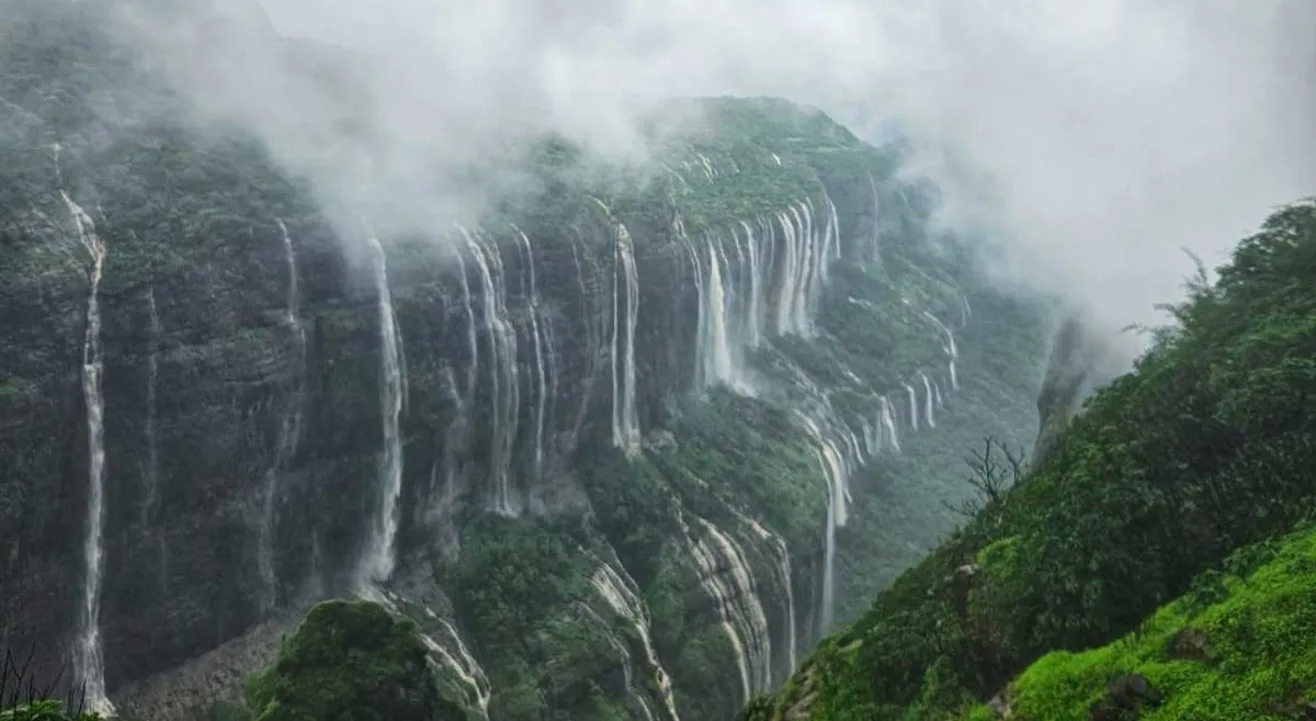Introduction
Maharashtra’s Sahyadri mountain range is a trekker’s paradise, and the Andharban trek stands out as a captivating adventure. This dense forest trail, aptly named “Andharban” (meaning “dark forest”), promises lush greenery, cascading waterfalls, and a mystical atmosphere, especially during the monsoon season.

Difficulty Level of Andharban
Andharban is classified as a moderate-level trek. While its gradual descending trail makes it less strenuous than some Sahyadri ascents, the distance (around 14 km) and the dense, sometimes slippery forest terrain require a decent level of fitness and stamina.
History and Folklore
The Andharban forest boasts a rich history. It was once a trade route connecting the Konkan region to the Deccan Plateau. Folklore and local stories add a touch of intrigue to the trek – tales of hidden pathways and mysteries within the dense foliage.
How to Reach Andharban
The starting point for the trek is Pimpri village, situated near Tamhini Ghat. Here are the ways to get there:
- Private Vehicle: The most convenient option if you have your own transportation. Drive from Lonavala towards Tamhini Ghat via the Lonavala-Aamby Valley road (approximately 50 km).
- Public Transport: Take a State Transport bus from Lonavala to Bhamburde village (about 35 km). From there, either walk (14 km) or hire a rickshaw to Pimpri village.
Food, Water, and Accommodation
- Food: Since Andharban is typically a single-day trek, carry packed lunches and snacks. Villagers at the base may offer simple meals.
- Water: Carry at least 2-3 liters of water per person. While streams are present during monsoon, water availability may be limited in other seasons.
- Accommodation: Most trekkers complete Andharban as a day trip. However, for overnight stays, basic homestays or camping options (with permission) are available near Pimpri village.
Other Treks in the Vicinity
The region around Andharban offers several other exciting trekking options:
- Devkund Waterfall Trek: A challenging but rewarding trek to a magnificent waterfall.
- Plus Valley: A lush, picturesque valley.
Temples
There are no major temples at the base or on top of the Andharban trek route. However, small local shrines may be found nestled within the forest.
Seasonal Flora and Fauna
- Monsoon (June-September): The forest becomes a vibrant green, waterfalls are in full flow, and wildflowers bloom. Watch out for leeches and slippery trails.
- Post-monsoon (October-February): Pleasant weather, fewer crowds, and clear views of the surrounding valleys.
- Summer (March-May): Can be hot and humid. Streams might dry up, but the forest still offers a welcome respite from the heat.
Activities at andharban
- Trekking: The primary draw of Andharban.
- Photography: Capture breathtaking landscapes and waterfalls.
- Birdwatching: The forest is home to diverse birdlife.
- Camping: A unique way to immerse yourself in nature (with necessary permissions).
Important Tips
- Best time to visit: Monsoon for lushness, post-monsoon for clearer views.
- Hire a local guide: Especially if you’re unfamiliar with the area.
- Wear sturdy trekking shoes: The terrain can be uneven and slippery.
- Pack rain gear: Umbrellas might be cumbersome in the dense forest.
- Carry insect repellent.
- Respect the environment: Leave no trace behind.



